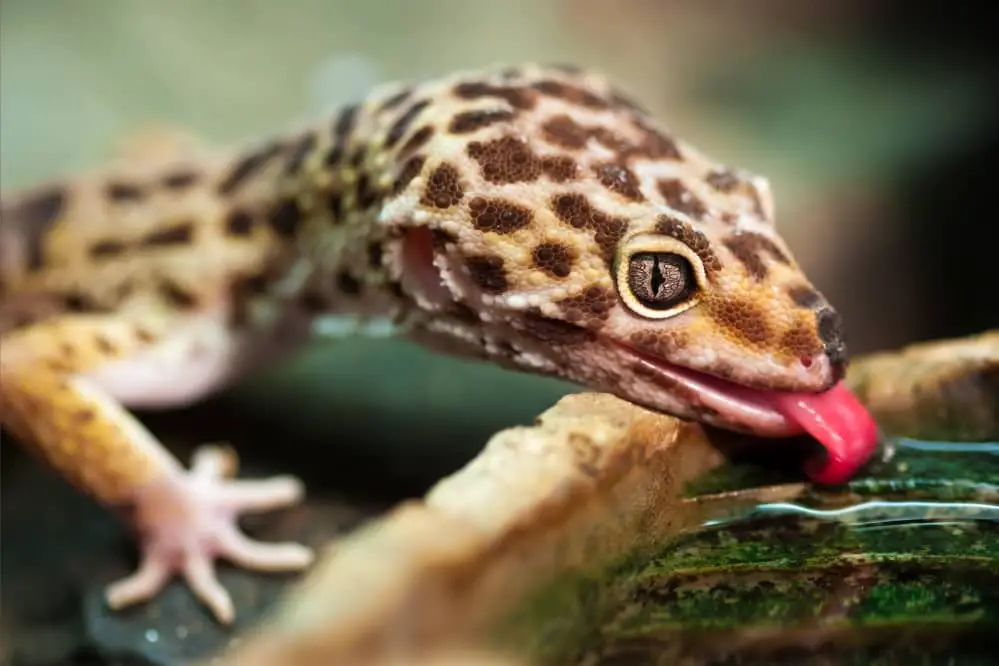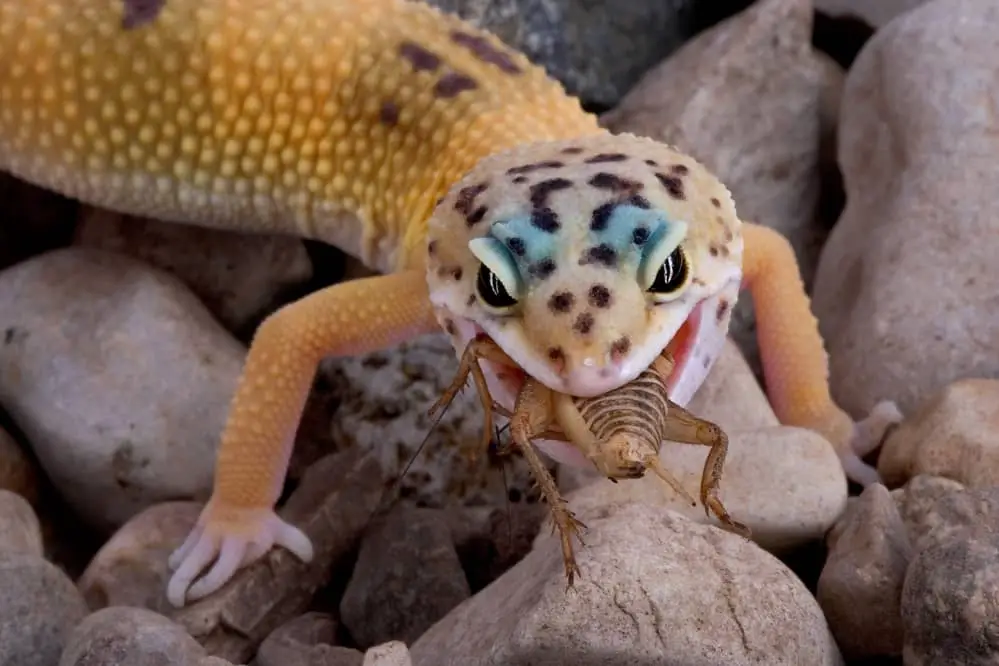The frequency with which you must feed your leopard gecko will vary according to its growth and health. So, how frequently must you provide your leopard gecko?
Baby leopard geckos must be fed every day whereas adults must be fed two to three times each week.Pregnant leopard geckos can resist food, but they should be provided food daily until they eat again. Feeding should be avoided during and before brumation.
How Often Should Your Leopard Gecko Be Fed?
Young leopard geckos grows rapidly. Healthy development requires ample amount of minerals, including protein and calcium. Therefore, babies must be fed more frequently than adults.
During juvenile stage, between 4 and 12 months, you should add brief fasting periods into your leopard gecko’s diet. By the age they are 12 months old, they should be eating two to three times a week.
| Leopard Gecko Age | Feeding Frequency |
| Baby Leopard Gecko 0-4 months | Every day |
| Juvenile Leopard Gecko 4-12 months | Every day |
| Adult Leopard Gecko 12+ months | Every other day |
It would help if you built a healthy eating pattern by consistently providing meals at predefined schedule. The optimal time to feed food to leopard geckos is at dawn or dusk because they are crepuscular.
How Often Do You Feed Your New Leopard Gecko?
A new leopard gecko, will frequently refuse to eat until it adjusts to its new environment. Leopard Geckos are extraordinarily sensitive to change. It is crucial to make water readily available during this period. You should also structure a feeding schedule that your new leopard gecko can get accustomed to.
In the beginning, regardless of age of your leopard gecko, provide daily meals. Once they begin consuming food, you may implement above feeding schedule. Measure and weigh your new leopard gecko as soon as you receive it. Compare its size and weight to the typical growth rate of leopard geckos.
If your leopard gecko appeared underweight or undersize, you may need to feed it more frequently than usual. It is always advisable to seek professional help from veterinarian if you don’t see improvement in your leopard gecko’s weight and size.
How Often Should a Laying Leopard Gecko Be Fed?
If your pregnant Leopard Gecko is avoiding food, provide it regularly until she accepts it. A pregnant leopard gecko is a female preparing to deposit eggs in her abdomen. This can occur whether or not the female has mated. A pregnant female needs plenty of nutrients, particularly protein and calcium. This is because egg production requires a lot of nutrients and energy.
Therefore, you must ensure that your female leopard gecko consumes variety of food rich in calcium and vitamins. Unfortunately, pregnant leopard geckos cease feeding as their pregnancies proceed. One explanation for this is that their stomachs swell significantly with eggs. This leaves little space for eating large meals comfortably.
It is natural for pregnant leopard gecko to avoid food for several weeks. However, we must take all precautionary steps to prevent extreme weight loss and calcium deficiency.
Even when she is refusing or accepting just tiny pieces, provide meals every day till her appetite returns to normal. During this season, your female leopard gecko may lack energy or agility to feed herself. You can help her eat by gently hand-feeding her.
Related article Why Is My Leopard Gecko Not Eating?
How Frequently Should a Leopard Gecko Be Fed during Brumation?
In wild, seasonal temperature decrease induce brumation. Brumation parallels hibernation and torpor. However, leopard geckos do not often sleep continuously. They may instead wake up and stroll or drink.

In captivity we have the luxury of consulting veterinarian before brumation. Veterinarian can examine leopard gecko’s body condition and parasites it harbors. They can recommend if it is healthy enough to endure brumation.
Your leopard gecko will require a fasting period before entering brumation. They should not be fed anything. This is because food that remains in their digestive tract while they sleep may decay.
The food-rotting microbes will produce gas, irritation, and may cause infection. Therefore, it is essential to starve your leopard gecko for ten days before brumation. Also, when they wake up during brumation (at irregular interval), you should not feed your leopard gecko.
After brumation, you will need to feed your leopard gecko more than usual. They will have lost weight and must replenish their fat reserves.
How Much Should My Leopard Gecko Be Fed?
Leopard Geckos should be fed two insects (of appropriate size) every other day,. Mealworms of an appropriate size should be presented in a tiny dish, but crickets do not require dish. To reduce the risk of choking, don’t provide food in excessive amount.
Baby leopard geckos should be fed five to seven tiny crickets or mealworms daily until they reach around 4 inches in length. Larger food should be provided only every other day until they reach maturity in about 10 to 12 months.
Adults can be fed 6-7 big crickets or mealworms- two to three times a week,. When supplemented with waxworms or calciworms, leopard geckos should be given three to five worms- three times every week.
Conclusion
We hope this article helped answer the question of “how often and how much should I feed my leopard gecko?” Remember that leopard gecko babies younger than one-year-old should be fed daily, while adults should be fed every non-consecutive day.
Foods should be provided late in the day or early in the morning regularly. Keep them on a regular diet of insects and provide them with fruit and vegetables.

